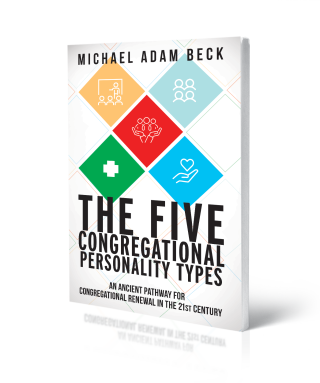Join a Grassroots Revolution of Congregational Renewal
The Church of Jesus Christ will never die. If every person has his mantra, this one is mine. I have carried this message across seas and continents. How can I be so sure?
Jesus says, “on this rock I will build my church and the gates of hades will not prevail against it” (Matt 16:18). I love that Jesus proclaims this literally standing before the Gates of Hades at the Temple of Pan in Caesarea Philippi. He doesn’t say you will build my church… he says I will build it. Now, you will become the ingredients of it, the “living stones” built upon the rejected “cornerstone” of Jesus (1 Peter 2:4-6). Nothing in the world or under the world can stop the church of Jesus.
Now, my church might die. The church as we know it, might die. 1950’s time-capsule worship, that might die (and don’t say amen too vigorously). But Jesus’s Church, cannot, will not, die.
For as long as there has been a church of Jesus, it has been going through a process of death and resurrection. She has been expressing herself in fresh, contextual, “all things new” kinds of ways. The church of Jesus is indestructible. It lives as a microcosm in the billions of believers across time and space. The Spirit-filled community, that derives its life from the life of God, is always being renewed.
So then, why do so many conversations about the church feel so hopeless? Is congregational renewal a pipedream? Do inherited congregations with deep roots in their communities even still have something to offer the world? In some ways it feels like we have given up on even the possibility that congregations can become vital and healthy.
Consider these three common stories:
Rev. Carrie is an amazing preacher. She lives by the motto, “sweat in the study, fire in the pulpit.” She spends a great deal of time studying and preparing for the weekly Bible study and Sunday sermons. She has served a string of growing congregations, each who rallied around her preaching gift. That is until she arrived at First UMC. The congregation seems to be non-responsive overall. Only a handful of faithful folks show up for weekly Bible study. Worship attendance has been declining on Sundays. Some folks get up and leave before the service is over to connect and eat in the fellowship hall. Carrie is frustrated, burned out, and disillusioned with her own calling.
Third Baptist Church lives to serve their community. Each week, volunteers rally to distribute food to several hundred families. Thursday nights they host a community dinner open to all those in the surrounding poverty-stricken neighborhood. They have turned one of their buildings into a shelter for those experiencing homelessness and another building serves as a free clothing closet. Yet, none of this activity has translated to growing disciples or financial sustainability for the congregation. Members are at odds with each other. Pastor Julian suspects they are doing a lot of the right things but for the wrong reasons. His congregation is cranky and fatigued. They blame him for the lack of growth and vitality. Not only are pastor and church at odds, but there is deep resentment on both sides.
Last Congregational Church is elated with their clergy person, Pastor Lamar. Lamar set out to visit every member in their homes. He makes weekly visits to the sick and shut ins. He organizes a monthly fellowship event so the congregation can spend quality time together. People often sing Pastor Lamar’s praises, and they hope to keep him around. However, the congregation has continued to shrink year after year. People retire and migrate down to warmer climates leaving the church behind. The funerals of long-term members leave a void in the emptying pews. Pastor Lamar is frustrated, doing everything he knows to do to shepherd his flock and yet the closure of the church seems inevitable.
These scenarios are all too familiar for many congregations and pastors. What is at the heart of these challenges? Can faltering congregations reverse the toxic spiral of decline?
It's no secret, thousands of congregations close their doors every year. The tribe called “none” continues to grow exponentially and in 2022 almost half of pastors said they were considering leaving full-time ministry. This narrative of decline overshadows the many hopeful stories of congregations’ experiencing resurrection. Renewal is not only possible… it’s already happening.
There is a grassroots revolution of congregations across the United States finding a renewed sense of vitality and mission. Unfortunately, those congregations are “positive deviants” in the overall trend of congregational decline. In my doctoral research I studied growing congregations and what they were doing differently. I’ve had the opportunity to coach and consult with hundreds of churches across the ecclesial spectrum. Yet, congregational renewal is not just a theory for me.
My wife Jill and I pray that God will send us to the churches “no one else wants or sees.” We are called to serve congregations on death’s door. Collectively as co-pastors we have served six revitalizations in a row, and currently serve two Florida United Methodist congregations, Wildwood and St Marks, Ocala.
An ancient pathway for congregational renewal is now available as an ecosystem of resources… The Five Congregational Personality Types. Here’s a glimpse of what we’ve discovered.
The dominant approach to understanding human personality today is known as the Five Factor Model (FFM). Hundreds of distinct traits have been summarized within five dominant personality dimensions universal to all human beings, (extroversion, agreeableness, openness, conscientiousness, and neuroticism). Psychologists measure these traits through the Revised NEO Personality Inventory (NEO-PI-R) more commonly called the “Big Five Assessment,” a 240-item instrument, scientifically validated through hundreds of studies across many different cultures.
What can psychologists and researchers of human personality teach us about congregational renewal?
Biblically, these five personality dimensions corelate with the fivefold gifting Jesus bestows upon the church for her upbuilding, called the APEST typology—Apostle, Prophet, Evangelist, Shepherd, Teacher (Eph 4:7–13).
Every congregation has a unique personality in the same way a human does. Just like no person is exactly the same, so neither are any two congregations. Yet, just as psychologists can condense hundreds of unique personality traits into the big five categories, so too can congregations be understood through five congregational personality types. While there are a multitude of unique variations, the types give us a framework through which every congregation can grow in maturity. The congregational types are the communal embodiment of the five basic personality dimensions (FFM).
Each congregational type is centered around a core Biblical value:
1. Proclamation Centered: This congregation values truth (ἀλήθεια) and loves growing and sharing in quality teaching and preaching.
2. Outreach Centered: This congregation values service (διακονέω) and embodying the good news in word and deed. They live to serve those outside the community.
3. Generosity Centered: This congregation values singleness/generosity (ἁπλότης) and uses its resources to invest in ministries that make a kingdom impact.
4. Fellowship Centered: This congregation values community (κοινωνία) and loves to be together and nurture one another.
5. Healing Centered: This congregation values wholeness (ἰάομαι) and the manifestation of Jesus’s life in the world, seeking to be a community where people experience healing.
Early in the life of the church we see some consistent traits that made up congregational life. Consider Acts 2:42-47…
"They devoted themselves to the apostles’ teaching and fellowship, to the breaking of bread and the prayers” … “wonders and signs were being done through the apostles. All who believed were together and had all things in common; they would sell their possessions and goods and distribute the proceeds to all, as any had need” … “And day by day the Lord added to their number those who were being saved.”
This window into early congregational life shows us that those first believers devoted themselves to the apostles’ teaching (proclamation centered), to deep communal life (fellowship centered) breaking of bread and sharing all things in common (generosity centered), the prayers and wonders (healing centered), and the Lord was adding outsiders to their numbers (outreach). A healthy, growing church in Acts expressed all these characteristics at some level, but this is exceedingly rare among congregations today.
Many congregations have little awareness of their personality type or what motivates them to do what they do. We who are clergy can also lack awareness of our congregation’s type and our own unique personality and leadership approach. All the activity with little results leads to fatigue. Relationships are strained, and a toxic spiral of decline continues. Meanwhile, the larger community outside of the congregations’ walls goes neglected, often suspicious of this museum-like institution occupying space in the neighborhood, like a relic from ages past.
Every single community on earth (rural, urban, suburban, digital, etc.) needs healthy, compassionate pastors and congregations to love them toward the fullness of God’s kingdom. Every congregation has a distinct heart, which is a unique expression of Christ. That heart can be either healthy or sick.
The ideal state of health for a congregation is to mature “to the measure of the full stature of Christ” (Eph 4:13). This would include embodying at some level each of the five personality types. However, this is more a lifelong journey of grace than a destination at which we arrive. Once we understand the five types and see our growth areas (dark side), we have a spiritual framework for growing more fully toward maturity and flourishing.
As we’ve shared The Five Congregational Personality Types with developers, pastors, and congregations piloting the resource they have consistently said that we have articulated something they’ve known to be true in their bones. Now, the pathway is providing congregations with a shared language and helping them discover how to nurture strengths, identify blind spots, transform weaknesses, and uncover contextually appropriate strategies to increase vitality.
Pre-order The Five Congregational Personality Types: An Ancient Pathway for Congregational Renewal in the 21st Century and join a grassroots revolution of congregational renewal!


